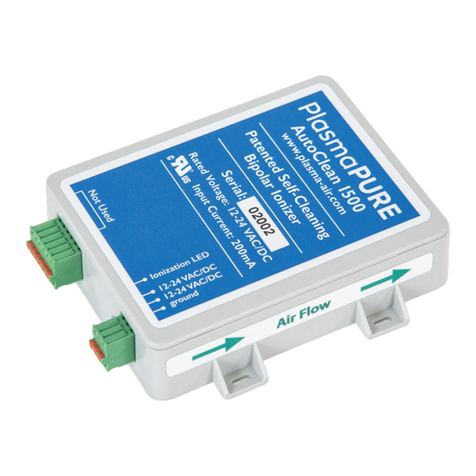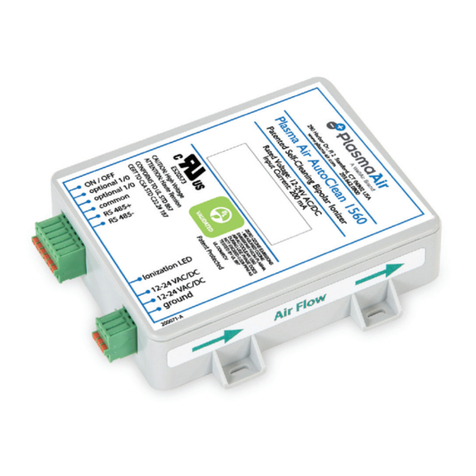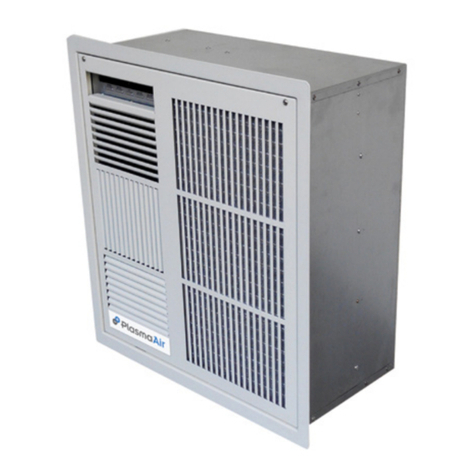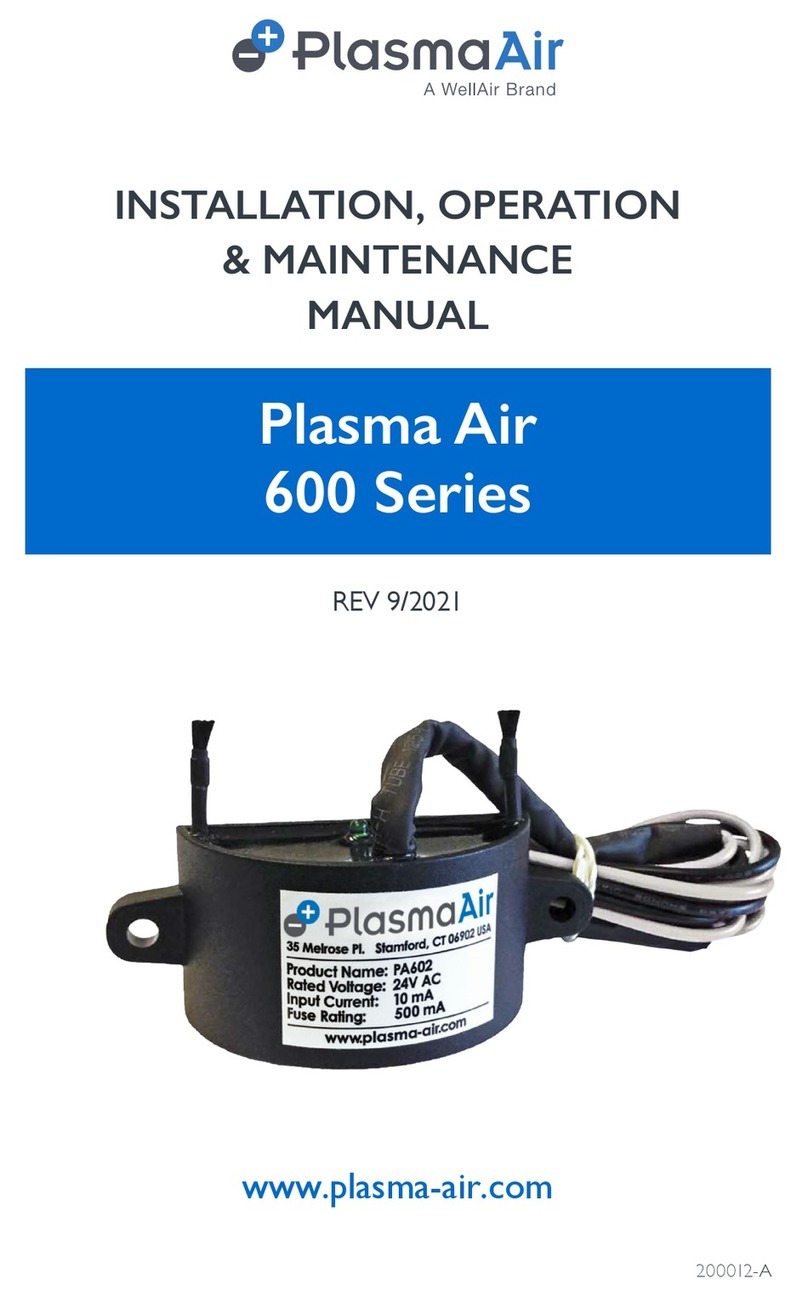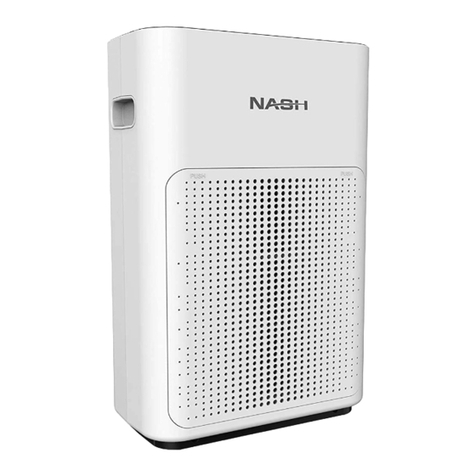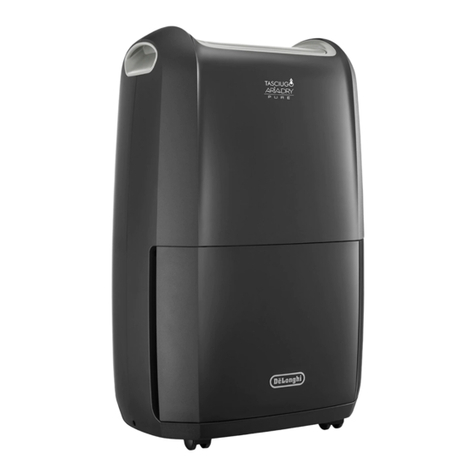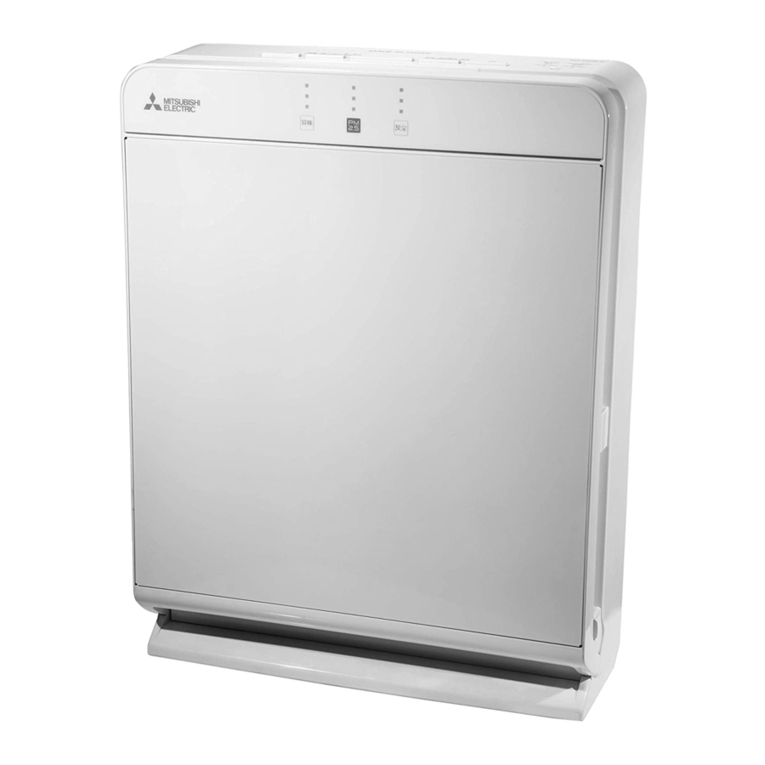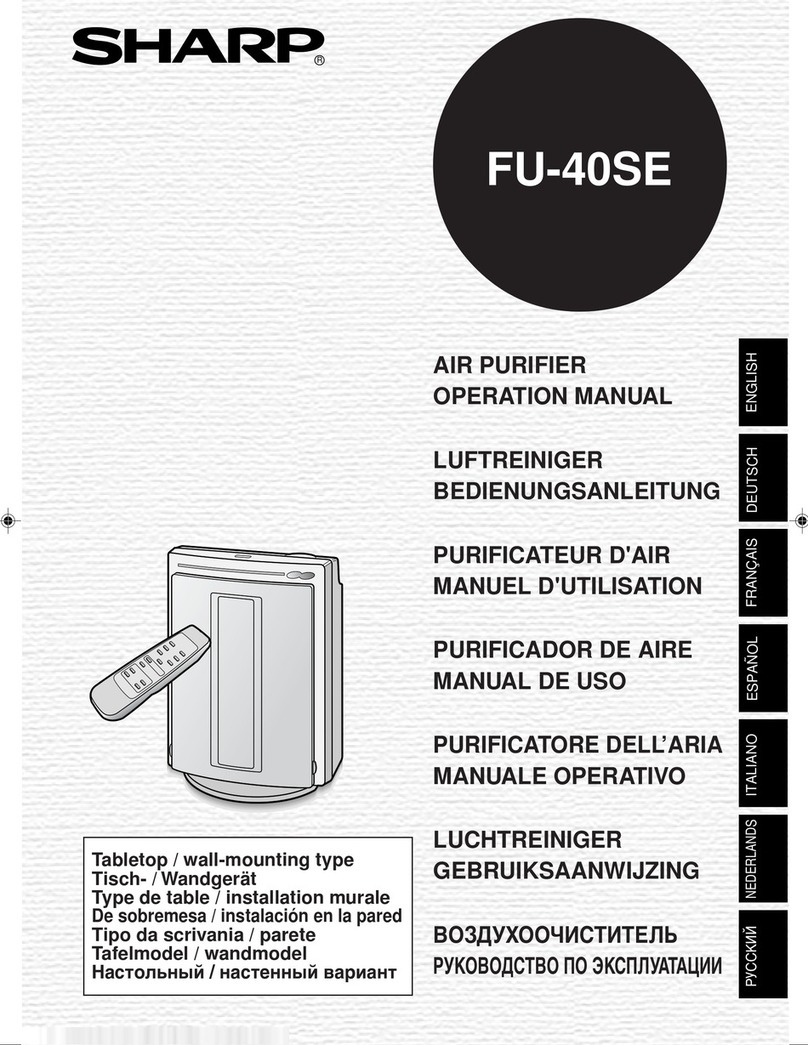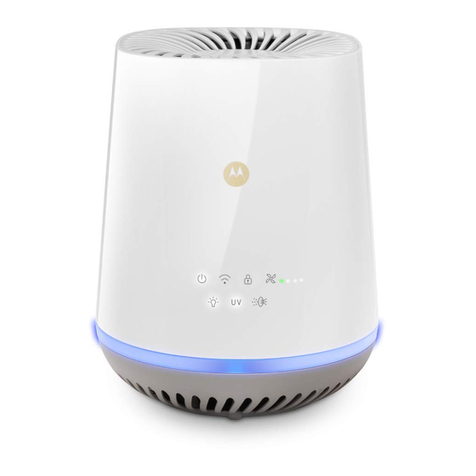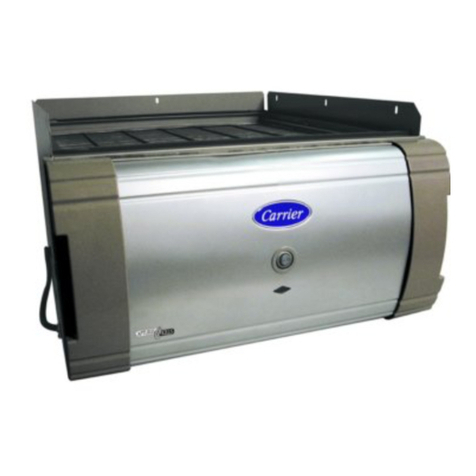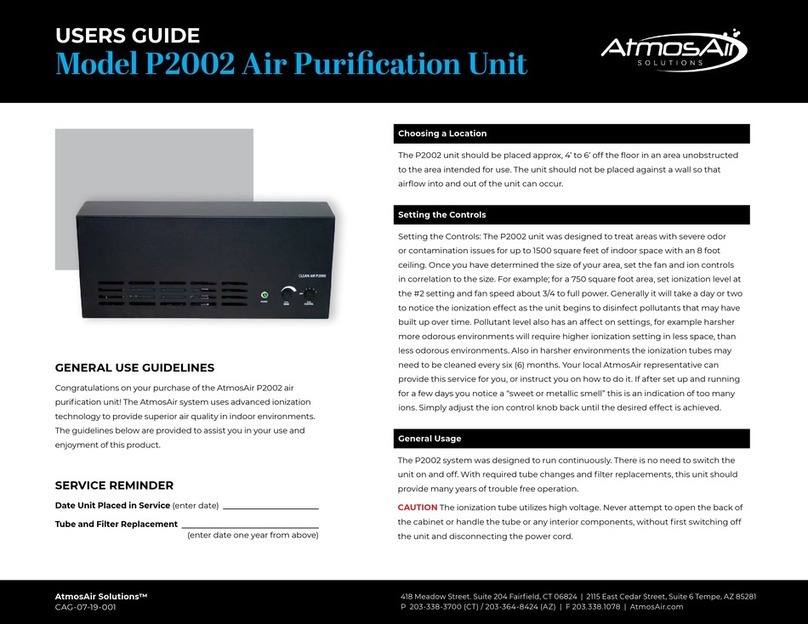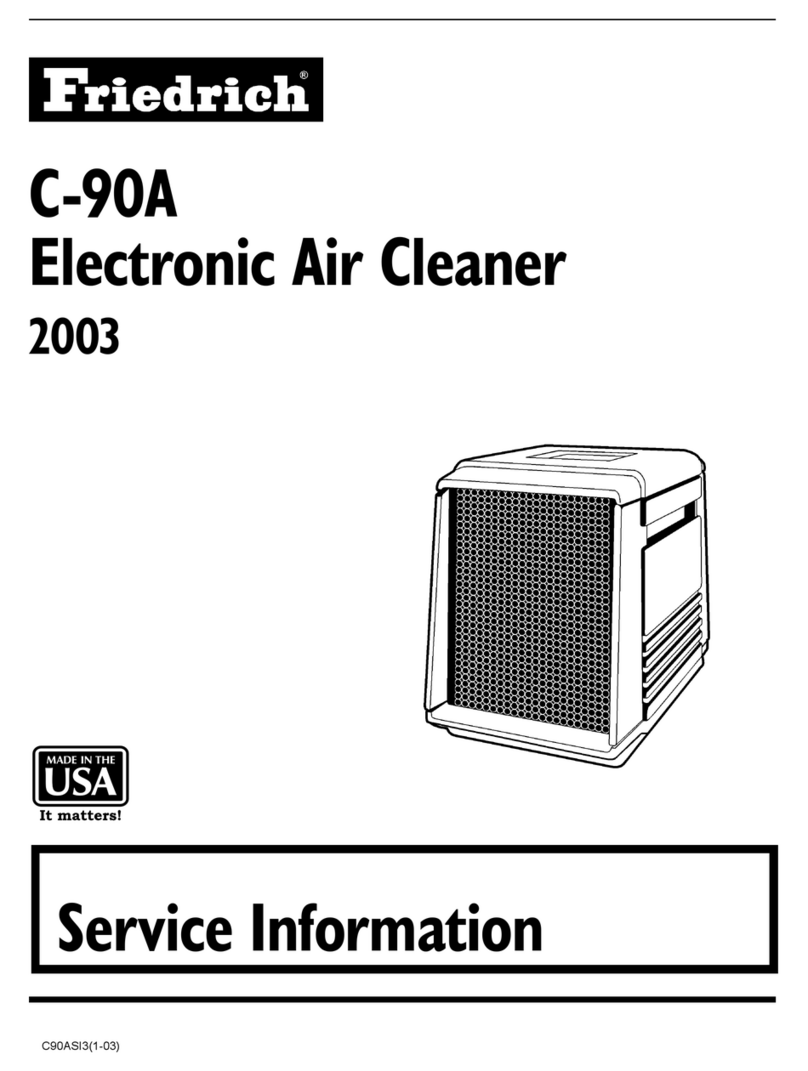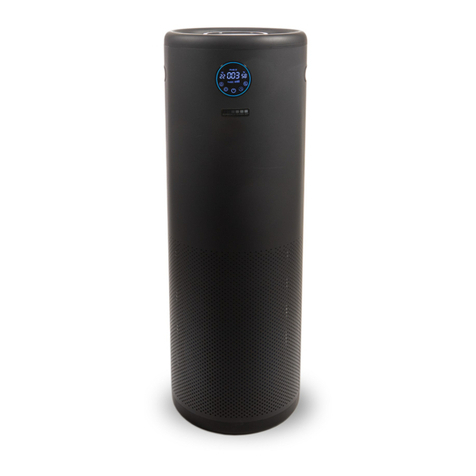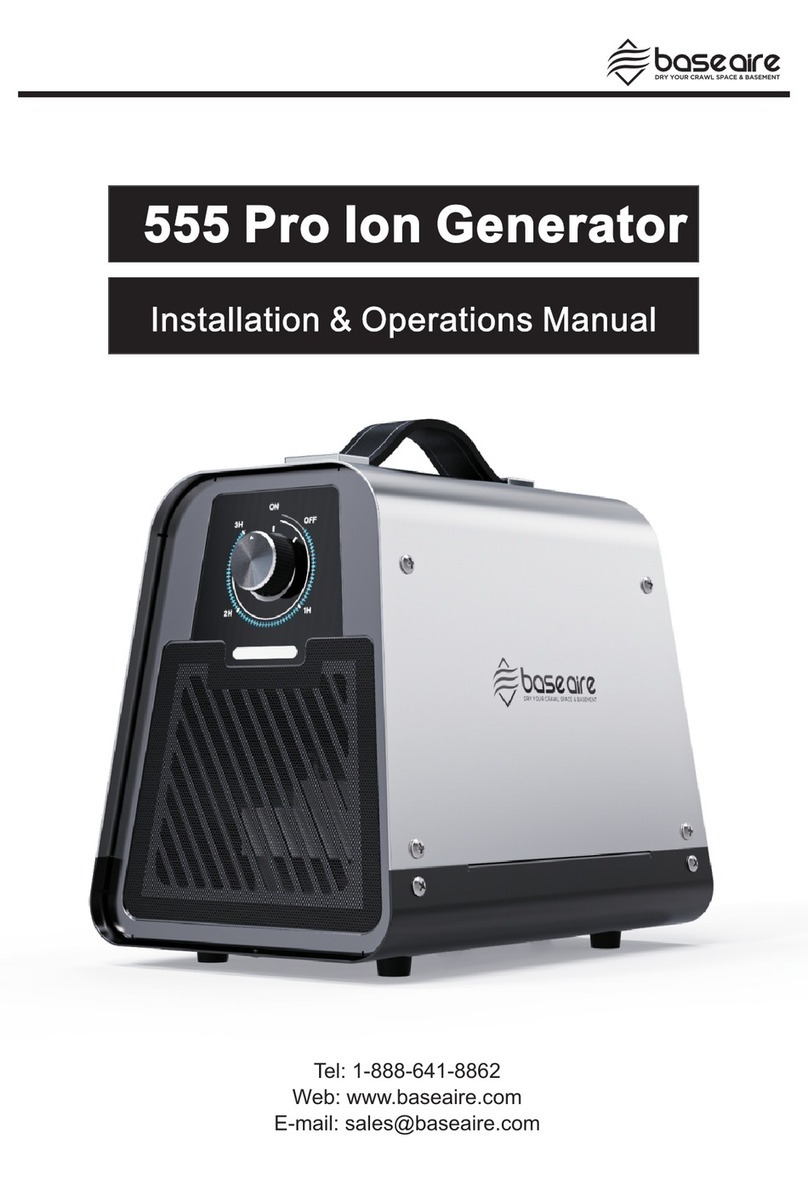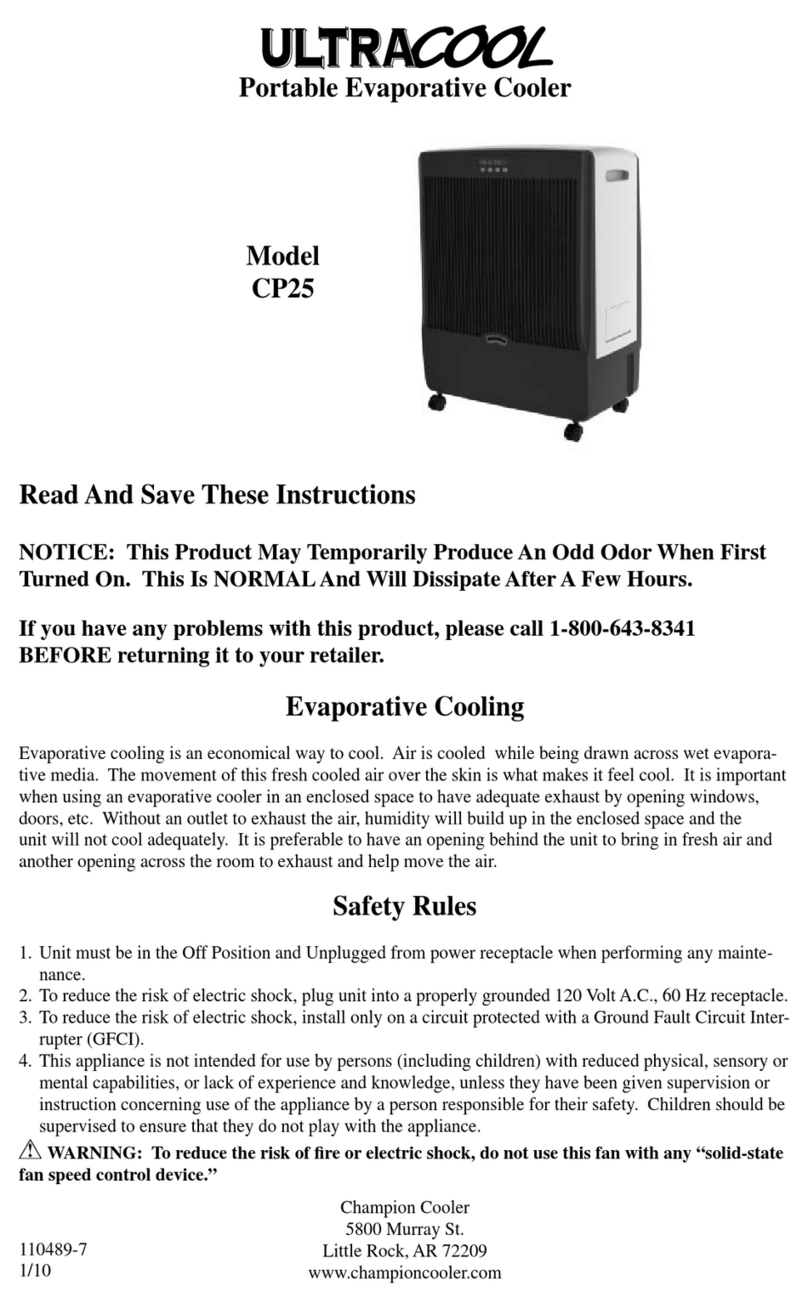
I TRODUCTIO
Plasma Air models 51E, 51F, 52E, and 52F air ion generators are 5 tube industrial quality units intended for installation in
air handling units or in duct systems for commercial and industrial facilities.
This ionization equipment is effective in reducing harmful pollutants and odors by introducing positive and negative
ions in the system airflow. The number of units and the size of the ionization tubes are dependent upon the airflow in
the system and the severity of the pollution problem. Model number nomenclature is further specified as follows:
5XY: X = 1 (120 Volts) or 2 (230 Volts)
Y = E (E-tubes) or F (F-tubes)
For example, a 51F is a 120 Volt, 5 tube unit with F-tubes
MECHA ICAL I STALLATIO I STRUCTIO S
Warning: To reduce the risk of fire, this unit should not be installed downstream from a humidifier or exposed to other
sources of moisture.
Caution: This product is suitable for mounting into duct of metallic construction only. Installation must be such that the
structural integrity of the ducting is not compromised.
1) Carefully remove the equipment from its shipping carton. Ensure that no damage occurred to any of the components.
2) Install the ionizing tubes using the supplied friction nuts. Tighten the 4mm grounding clamp screws to ensure good
contact with the tube sock. The top middle tube should be installed first.
3) The units can either be installed inside an air handling unit or in the supply air ductwork. See figure 1 for acceptable
mounting locations.
Mounting location notes:
•Ensure sufficient airflow over the ionization tubes.
•Do not mount the units in the return air duct or before
the system filter.
•Do not install immediately downstream of a humidifier.
•Allow sufficient space immediately downstream of the
cooling coil to avoid moisture carryover.
•Disconnect any Electronic Air Cleaner.
a)
To mount the units inside an air handling unit, use “L”
shaped brackets that are secured to the walls or floor of the AHU with sheet metal
screws. The units should be installed so there is sufficient airflow across the ionization
tubes, after the system filter, and not immediately downstream of the cooling coil to
avoid any moisture carryover. See figure 2
b)To mount the units in a duct, make a 19.5” X 9” rectangular cutout in the duct for a
50E and a 26” X 9” cutout in the duct for a 50F. Pre-drill mounting screw holes using
the unit as a template. The units have a flange gasket that forms a seal between the
duct and the equipment.
4) It is preferable, although not mandatory, to install the units with the tubes parallel to
the airflow. See figure 2
5)
If multiple units are installed on the same duct, the units need to be
installed around the perimeter of the duct so that ionized air from
one unit does not pass over a second ionizing unit. See figure 3
6) Units should be installed to allow access to the ionization level
adjustment knob and for general maintenance.The units should
not be installed behind a suspended floor/ceiling or a structural
wall, ceiling or floor.
ELECTRICAL I STALLATIO I STRUCTIO S
Warning: The secondary voltage to the ionization tubes can be 2,900 Volts AC. Do not connect to power before the installation
is complete. Always disconnect power to the unit before handling any of the unit components.
1) The power required is 10 watts per ionizing tube. The typical 50 unit draws about 50 watts. The power source should not
be protected by a breaker exceeding 20 amps.
2) The Model 50 is available in two primary voltage models, nominally 120 volts AC or 230 volts AC. The units may be used
on 50 cycle or 60 cycle frequencies. Verify that the Model 50’s voltage is the same as the available voltage by checking
the UL label on the unit.
3) The unit should be powered when the system supply fan is energized. This can be accomplished by any of the following
methods:
a.On systems with single speed supply fans, the fan power supply can be used.
b.Use an airflow switch in series with the unit’s power supply.
c. Install a relay off the 24 volt fan control circuitry and wire the unit’s power wiring through the O contacts.
d.Install a supply fan power current sensing relay and wire the unit’s power wiring through the O contacts.
4) A field-installed junction box should be installed within 4 feet of the unit. 3/8 inch flexible metal conduit or BX should be
installed between the junction box and the power fitting shown in figure 4.
5) See figure 4. Step by step instructions for inserting power wiring into power inlet fitting:
Step 1) Trim the protective steel armor of the BX cable exposing between 1” and 1¼“ of the internal wires.
Step 2) Strip the wires exposing 3/8” copper.
Step 3) Unscrew the Shell assembly from the Female Insert by pushing the Coupling Ring towards the Shell assembly
and unscrewing counterclockwise.
Step 4) Unscrew the Pressing Screw counterclockwise exposing the Pinch Ring and rubber Seal.
Step 5) Slide the Pressing Screw, Pinch Ring, Seal, and Shell over the BX cable, insuring that all pieces are in the right
order and direction as shown above.
Step 6) Insert the Hot or L1 (black) wire into the o. 1 hole on the Female Insert fitting. Insert the eutral or L2 (white)
wire into the o. 2 hole and the Ground wire into the ground hole. OTE: Inserting all three wires simultaneously
makes the assembly process easier. Tighten the set screws securely.
Step 7) Slide the Shell fitting towards the Female Insert fitting and screw together clockwise.
Step 8) Ensure that the rubber Seal is sitting snugly inside the large end of the Pinch Ring.
Step 9) Slide the Seal and Pinch Ring assembly and the Pressing Screw towards the Shell fitting.
Step 10) Insert the Seal and Pinch Ring assembly into the Shell fitting and screw the Pressing Screw into the Shell fitting
securing the BX cable tightly into the Shell assembly.
Step 11) Plug the completed assembly into the male fitting on the ionization unit and screw the Coupling Ring clockwise
to join the two fittings. The Female Insert will only fit onto the male fitting one way.
PLASMA AIR I TER ATIO AL 35 MELROSE PLACE STAMFORD, CT 06902 203-662-0800 info@plasma-air.com www.plasma-air.com PLASMA AIR I TER ATIO AL 35 MELROSE PLACE STAMFORD, CT 06902 203-662-0800 info@plasma-air.com www.plasma-air.com
